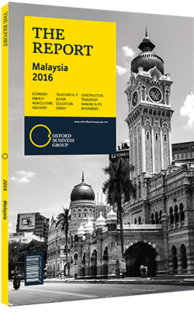Tunku Ahmad Burhanuddin, Group Managing Director and CEO, Themed Attractions Resorts & Hotels: Interview

Interview: Tunku Ahmad Burhanuddin
What potential is there for development of the tourism and hospitality sectors outside of Malaysia’s traditional tourism centres?
TUNKU AHMAD BURHANUDDIN: Malaysia has done well to develop its tourism sector recently, but we still lag behind our Indonesian, Thai and Singaporean neighbours in tourist arrivals and spending. The market is there, and government and business are working hard to take advantage of this, but I feel that the industry’s efforts could be more coordinated and better targeted to offer an experience tailored for specific market segments. On this front, we have been working more closely with outbound agents in our various target markets to ensure that our message is being accurately communicated. It is just as important to work with inbound agents here in Malaysia to ensure that when a tourist arrives, his or her experience is smooth and enjoyable and they know exactly what to do. Most importantly, Malaysia needs to leverage its uniqueness as a destination. For example both Bali, Indonesia and Siem Reap, Cambodia provide singular cultural experiences not found anywhere else. Malaysia’s unique proposition comes in the form of its biodiversity and ecotourism experiences, from the Mulu Caves in Sarawak to the mangrove forests of peninsular Malaysia. However, we need to ensure that we manage these resources sustainably and responsibly, because overcrowding might ruin the environment. Ecotourism needs to be developed within a long-term context, and it should perhaps be tailored towards the higher-end segment of tourists to avoid mass tourism and the risks that come with it.
How important is it for Malaysian companies to work more closely with their regional neighbours to increase tourist inflows?
BURHANUDDIN: Tourists on a 10-day holiday are likely to visit other locations before coming here. Most people on the other side of the world may not even know where Malaysia is, and their first discovery trip will probably begin in Thailand or Cambodia before heading to Malaysia. By working with outbound agents, we can work to ensure Malaysia is included within regional travel packages. It is crucial for us to then make sure that the couple of days they spend here are compelling and hold that “wow” factor, which will ensure that tourists feel a desire to come back for a lengthier stay. Malaysia is already well-situated for the family and higher-end segments; it is the middle-segment, consisting of backpackers and young adults, that is still lacking. The central keys to attracting these segments are excitement, food and good value for money. The way Malaysia competes with its neighbours is through differentiation. On the other hand, some people appreciate tranquillity in their holiday. So we are looking at differentiating ourselves at the same time as we are competing in the family and ecotourism segments.
How much potential is there for expansion within Malaysia’s theme park segment?
BURHANUDDIN: There is certainly a lot of potential in the market, and in terms of large-scale theme parks there are plenty of gaps waiting to be filled. It really depends on how new parks are positioned and who the target audience is. While there is often a crossover, you essentially have both local and international customers, and theme parks here are geared to one or the other. When we opened LEGOLAND Malaysia Resort and Sanrio Hello Kitty Town in Johor we successfully attracted both internal tourists and tourists from Singapore due to their proximity. We also attracted overseas tourists by virtue of being the only LEGOLAND in Asia. There is potential, but future parks require careful targeting. We have been working with both government and non-government agencies to bolster human capital within the sector, as it is crucial that the service provided be top quality.
You have reached the limit of premium articles you can view for free.
Choose from the options below to purchase print or digital editions of our Reports. You can also purchase a website subscription giving you unlimited access to all of our Reports online for 12 months.
If you have already purchased this Report or have a website subscription, please login to continue.

